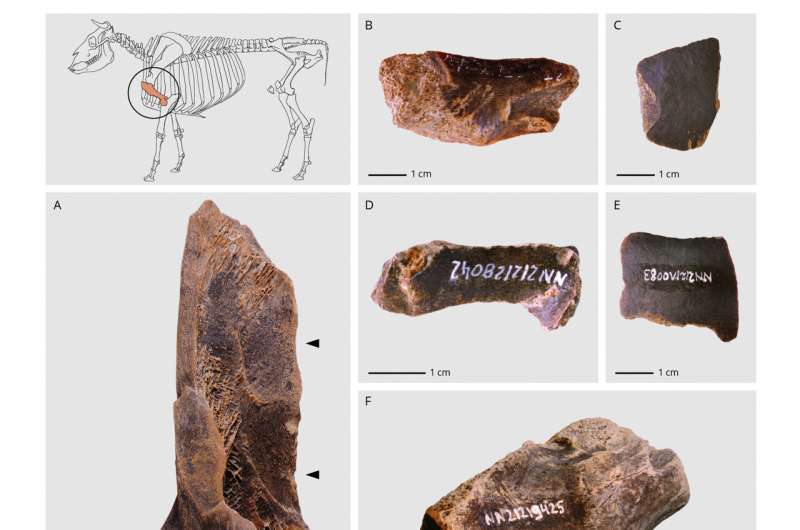
In a groundbreaking discovery, researchers have found evidence that Neanderthals were rendering fat from animal bones nearly 125,000 years ago, a practice that predates similar activities by other early humans by tens of thousands of years. This revelation, published in the journal Science Advances, highlights the sophisticated survival strategies of Neanderthals in the Neumark-Nord region of Germany.
The study suggests that Neanderthals, often perceived as primitive, were adept at food processing techniques that allowed them to extract vital nutrients from animal remains. This finding challenges previous assumptions about the dietary practices of early human species and underscores the Neanderthals’ adaptability in harsh climates where high-calorie foods were essential for survival.
Uncovering the Neanderthal “Fat Factory”
The archaeological site at Neumark-Nord 2 has revealed a dense concentration of bones from over 170 large mammals, intermixed with flint artifacts and hammer stones. These bones were found in what researchers describe as a “bone floor,” indicative of systematic processing by Neanderthals. Notably, many bones were discovered in depressions at the excavation layer’s base, suggesting a deliberate effort to extract and utilize bone marrow and fat.
Prior to this discovery, the earliest known evidence of fat rendering by early humans dated back to only 28,000 years ago. The new findings suggest that Neanderthals had developed these techniques much earlier, providing them with a crucial source of nutrition during periods when other food sources were scarce.
The Science Behind Fat Rendering
Rendering fat involves heating bones to release the nutritious fats contained within. At Neumark-Nord, researchers found that the majority of processed bones were rich in fat, such as femurs and jaw bones, while bones with lower fat content were less common. This selective processing indicates a clear understanding of the nutritional value of different bone types.
While no direct evidence of boiling was found, the presence of heated bone fragments near charcoal and water sources suggests that Neanderthals might have used organic containers, possibly made from deer skin or birch bark, to aid in the fat rendering process.
Implications for Understanding Neanderthal Diets
The discovery at Neumark-Nord provides new insights into the dietary habits of Neanderthals, who needed to balance their intake of protein, carbohydrates, and fats. Given that excessive protein consumption could lead to “rabbit starvation,” a condition resulting from protein poisoning, the ability to render fat would have been crucial for their survival, especially during the winter months when plant-based carbohydrates were scarce.
“This finding significantly shifts our understanding of Neanderthal dietary strategies and their ability to adapt to challenging environments,” said Dr. Lutz Kindler, lead author of the study.
Historical Context and Future Research
This discovery adds to the growing body of evidence that Neanderthals were far more advanced than previously thought. Their ability to process and store food efficiently suggests a level of sophistication in their survival strategies, comparable to those of modern humans.
Ongoing excavations at Neumark-Nord, conducted year-round from 2004 to 2009, have involved a diverse team of international researchers and students. These efforts have provided a wealth of data, yet many questions remain. For instance, it is still unclear how long the site was used or whether the Neanderthals stored bones for future processing.
Further research is needed to determine whether similar “fat factories” existed elsewhere and how widespread this practice was among Neanderthal populations. Such studies could reshape our understanding of early human diets and their evolutionary implications.
As scientists continue to explore the complexities of Neanderthal life, this discovery serves as a reminder of the ingenuity and resilience of our ancient relatives. The findings not only enrich our knowledge of human history but also highlight the importance of archaeological research in uncovering the secrets of our past.






